Playing Around with Number Composition: Games, Stories, and Everyday Problem Solving in the Preschool Classroom

You are here
Five preschool children and their teacher, Sylwia, are galloping around two Hula Hoops placed in the center of the rug. They sing along to a familiar tune playing in the background. When Sylwia pauses the music, the children know to scatter and find a spot in one of the two hoops. This time, they all gather into one hoop.
The music starts again, sending the group galloping around once more. The music stops, and the teacher and children each step into a hoop. “Adrian,” Sylwia asks, “what combination did we make this time? How many do we have in each hoop?”
Adrian counts the number of children in his hoop including himself, then counts the other hoop, replying, “Four and two.” Sylwia supports her dual language learners by translating key phrases into Spanish, such as “cuatro y dos.”
Sylwia then asks the whole group, “And how many are we all together?” The children call out, “Six!”
Th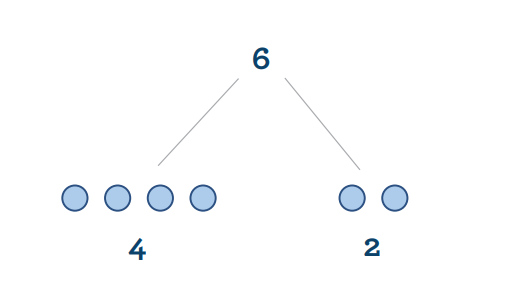 e teacher continues, “Oh, wow! We made another combination of the number six!” She represents this combination on the board using dots and numerals while the children count the dots with her. “We broke the number six into two parts. One part has . . .” Children complete her sentence: “Four.” “And the other part has . . .” “Two.” A child exclaims, “Two and four is six!”
e teacher continues, “Oh, wow! We made another combination of the number six!” She represents this combination on the board using dots and numerals while the children count the dots with her. “We broke the number six into two parts. One part has . . .” Children complete her sentence: “Four.” “And the other part has . . .” “Two.” A child exclaims, “Two and four is six!”
Sylwia and the children are not just having fun playing musical hoops. They are engaged in a math experience about composing and decomposing the number 6. Sylwia used a game and real-life problems to make this big math idea meaningful for the children.
What Is Number Composition and Decomposition?
Composing a number is putting together two numbers (two parts) to make a larger number (whole), like joining 2 and 4 to make 6. To decompose a number is to break that number (whole) into parts to make smaller numbers. For example, the number 5 can be decomposed as 5 and 0; 4 and 1; 3 and 2.
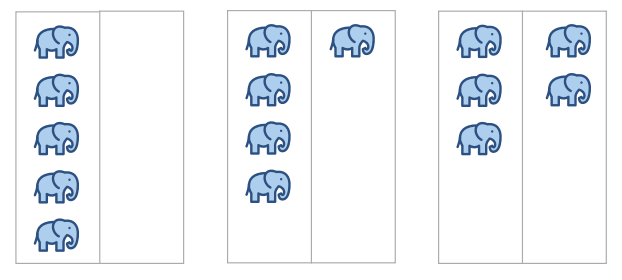
Activities such as the one in the opening vignette foster an understanding of quantity and of the relationship between numbers, and they lay the foundation for more complex math concepts to come. Number composition is different from addition or subtraction in that we are asking children to grasp the structure of a number. What makes up 5? What are different ways 5 can be split up? As young children think about and model this with concrete objects, they are learning to see the underlying patterns in the number system and to develop number sense.
As children develop their skills to compose and decompose numbers quickly and accurately, they can begin solving number problems in various contexts. For example, a child might be asked to set the snack table for seven children, but only have four cups in their stack. If they can fluidly decompose 7, they can quickly figure out how many cups are missing. Later, children will use what they know about number composition to help them do addition and subtraction.
Foundations of Number Composition and Decomposition
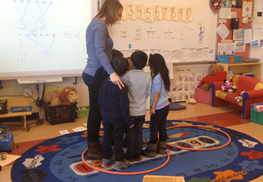 Children have the most success with number composition and decomposition activities when they have the beginnings of some foundational skills. For example, it is helpful when children have begun to
Children have the most success with number composition and decomposition activities when they have the beginnings of some foundational skills. For example, it is helpful when children have begun to
- know the verbal number sequence (be able to count from 1 to 10 aloud)
- count objects with one-to-one correspondence (numbers correspond with specific quantities)
- identify the quantity of objects in a set and know that the last number counted tells how many (cardinality)
- understand that numbers higher in the number sequence are greater than those earlier in the sequence (magnitudes)
These skills may not develop in the same sequence or at the same rate for all children, so games like Sylwia’s are perfect for utilizing and building upon several of the skills at once.
Introducing Number Composition to Children
Here are tips you can use when introducing number composition and decomposition to the children in your classroom:
- Start small. Counting and manipulating smaller numbers, like numbers 1 through 5, are easier for early math learners. Check for children’s understanding of the fundamental skills noted above. Later, challenge them with larger numbers.
- Use concrete objects. Use objects such as fingers or toys to represent quantity. You can use both hands to represent numbers under 10, then borrow a child’s or coteacher’s hand for larger numbers. The use of concrete objects supports dual language learners as well because they are able to make connections to numbers and quantities by manipulating materials without depending so heavily on language.
- Use identical objects. When possible, use objects that all look the same, like identical, one-inch blue cubes, in number composition activities. This is especially helpful early in the development of number composition, as children may be distracted by objects that have different features.
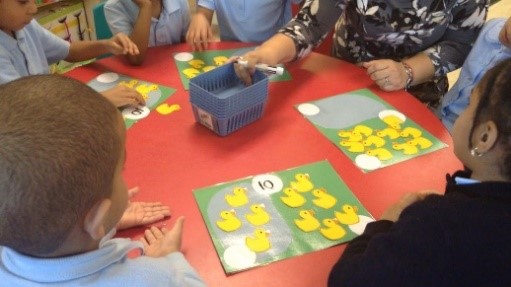
With the above strategies in mind, the following are activities you can do with children to practice number composition and decomposition:
- Practice during daily routines. Find opportunities to compose and decompose numbers across the day during children’s routine activities. During snack time, prompt children to find different ways to group their blueberries, pretzels, or cookies.
- Tell a story. You can mathematize many of the stories you tell children. Having a story behind a problem helps children connect to and make sense of the number operation. For example, after reading 10 Little Rubber Ducks, by Eric Carle, give children a mat that has been divided into two sections using tape. One half of the mat represents a pond, and the other half represents grass. Encourage children to create stories about the 10 ducks and find as many combinations of 10 as possible. For dual language learners in your classroom, use the Spanish translation of this book alongside the English version. During the activity, translate key phrases for them as you go, such as “diez patitos de goma.”
In Sum
After the Hula Hoop game, the children in Sylwia’s class are so curious about number composition that they explore it on their own during center time. They engage in valuable math practices by creating and solving their own problems, then communicating their findings graphically.
When center time is over, the children count how many classmates are going to clean up. The whole number is 12. Sylwia has the opportunity to teach the children how to split the number 12 into four groups: Three children go to the house area, three to the toy area, three to the block area, and three to the discovery area to clean. Sylwia connects visuals—such as drawing dots on the easel or using dot cards—with activities like this one so children can see the number groups.
Get inspired when children not only understand something new about their mathematical worlds, but also when they choose to use this new knowledge in their play! You can build upon children’s capacity for number composition and decomposition through engaging games and stories and authentic and meaningful experiences. With your help, children can come to see math as fun and as a useful tool to use every day.
Additional Resources
Explore these free resources for more tips, strategies, and activities to try when teaching math to the young children in your setting:
- DREME Network (Development and Research in Early Math Education): Math activities, articles, handouts, and videos on counting, patterns, operations, and measurement. http://prek-math-te.stanford.edu
- Young Mathematicians: Math games, book lists, and research for teachers and families around preschool math. http://youngmathematicians.edc.org
- Erikson Institute’s Early Math Collaborative: Videos, games, and resources for teachers, including number composition. https://earlymath.erikson.edu and https://earlymath.erikson.edu/foundational-concepts/number-operations
- EC STEM Lab: Articles and activity plans for preschool STEM activities. www.ecstemlab.com
- NAEYC’s Early Math Interest Forum on HELLO. hello.NAEYC.org
Check out the following NAEYC books to read more about early math with young children:
- The Young Child and Math, 3rd edition NAEYC.org/resources/pubs/books/young-child-mathematics-third-edition
- Embracing Math NAEYC.org/resources/pubs/books/embracing-math
- Where’s the Math? NAEYC.org/resources/pubs/books/wheres-the-math
Thanks to our many contributors and collaborators, such as Kristen Reed, NIEER, and the National Science Foundation (grants DRL-1019576 & DRL-1417040/DRL-1726082). Any opinions, findings, and conclusions or recommendations expressed in this material are those of the authors and do not necessarily reflect the views of the National Science Foundation.
Photographs: courtesy Sylwia Lech.
Copyright © 2022 by the National Association for the Education of Young Children. See permissions and reprints online at NAEYC.org/resources/permissions.

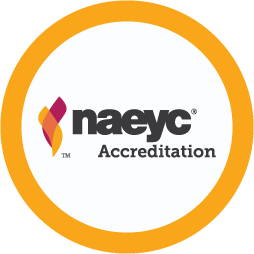 This article supports the following NAEYC Early Learning Programs standards and topics
This article supports the following NAEYC Early Learning Programs standards and topics
Standard 1: Relationships
1B: Building Positive Relationships Between Teachers and Children
Standard 3: Teaching
3D: Using Time, Grouping, and Routines to Achieve Learning Goals
Standard 2: Curriculum
2F: Early Mathematics
Alissa A. Lange is the director of the Early Childhood STEM Lab at East Tennessee State University in Johnson City, Tennessee.
Hagit Mano is a professor in residence of early childhood education at William Paterson University in Wayne, New Jersey.
Sylwia Lech is a lead preschool teacher in Passaic Public Schools in Passaic, New Jersey.
Irena Nayfeld, PhD, is a developmental psychologist and early education consultant working in New York and New Jersey.
